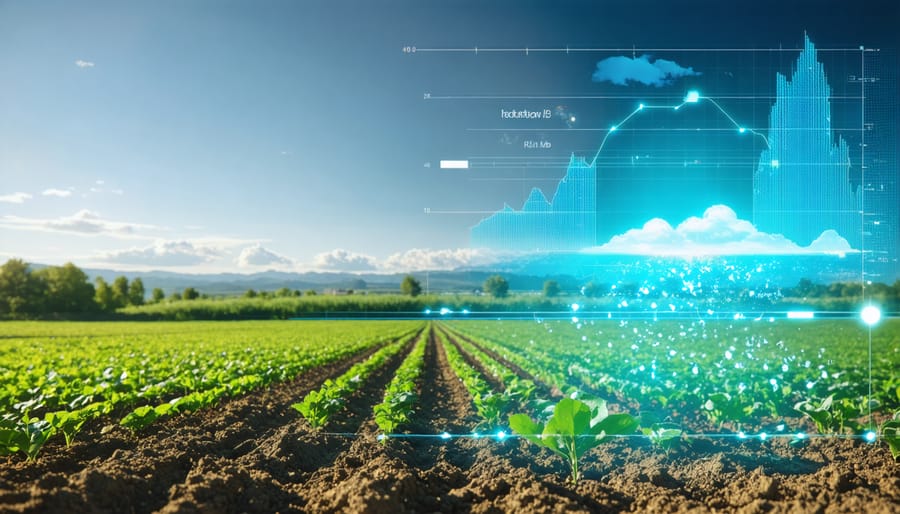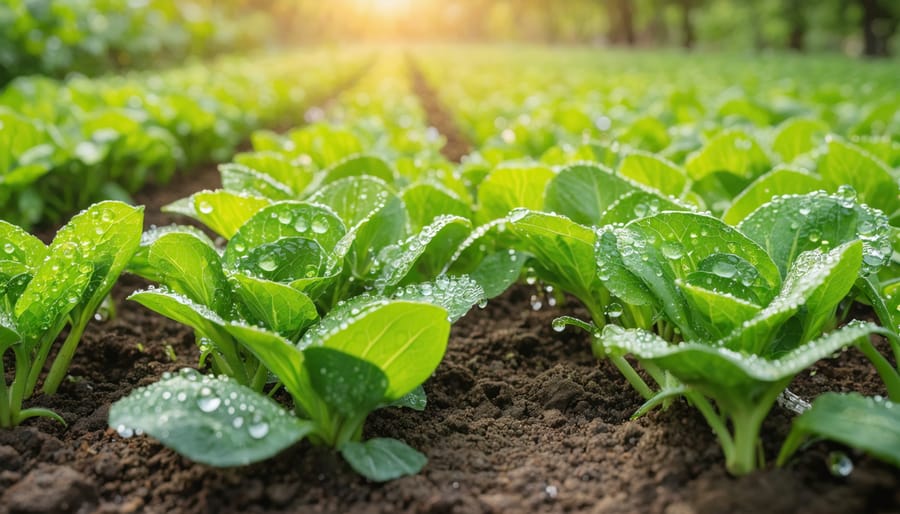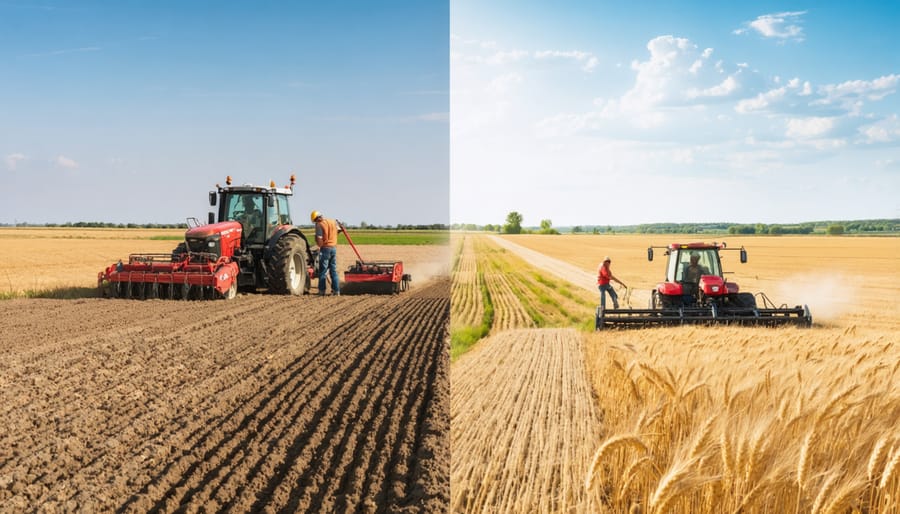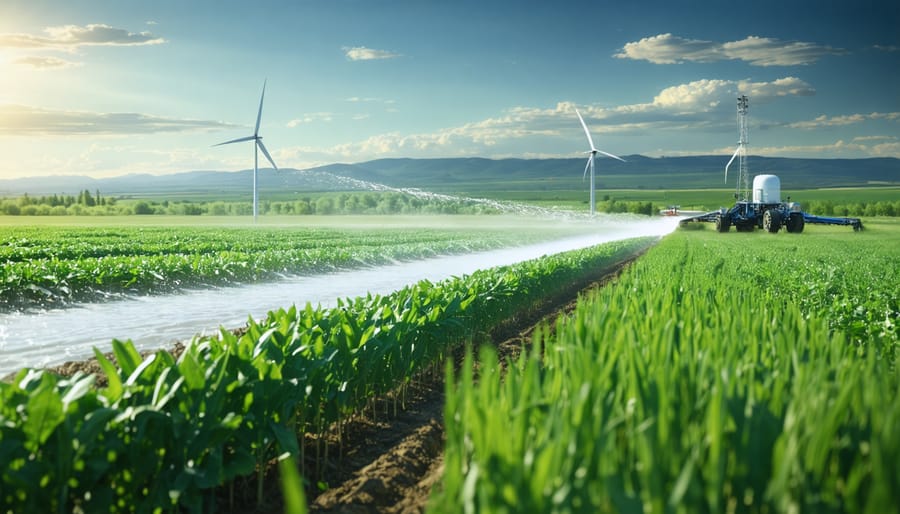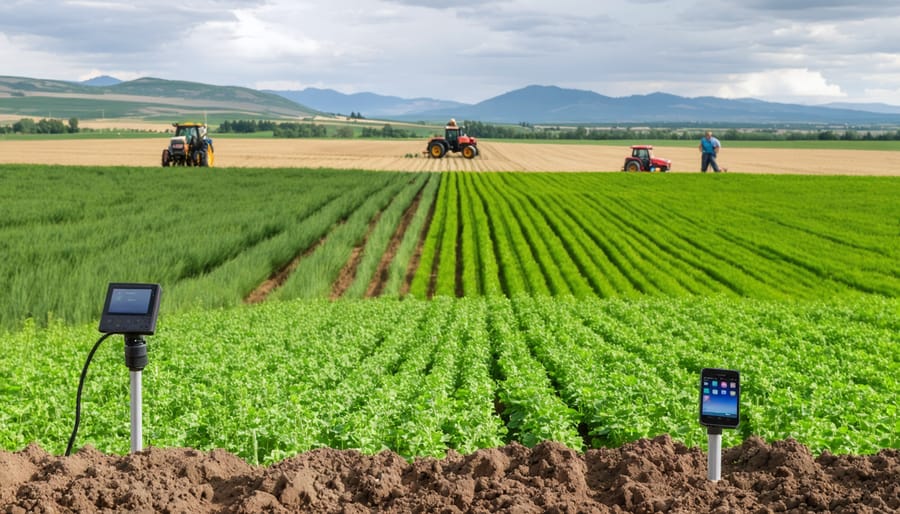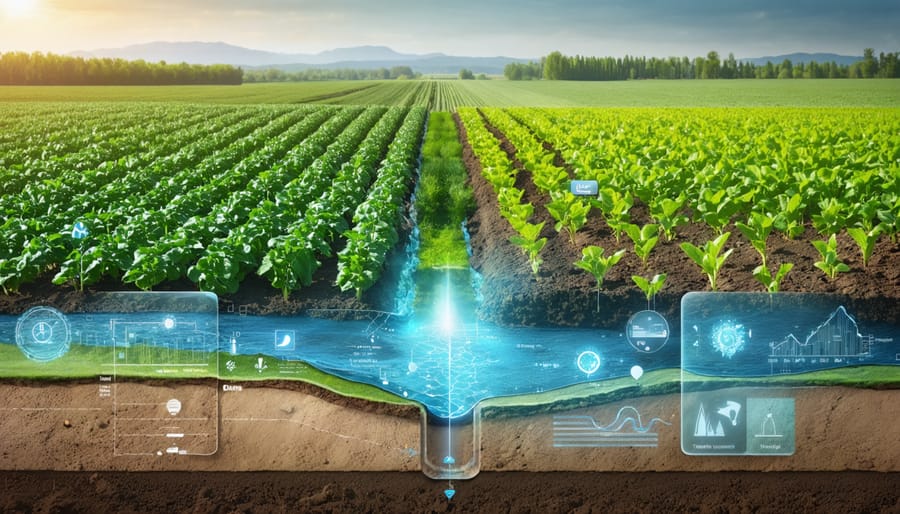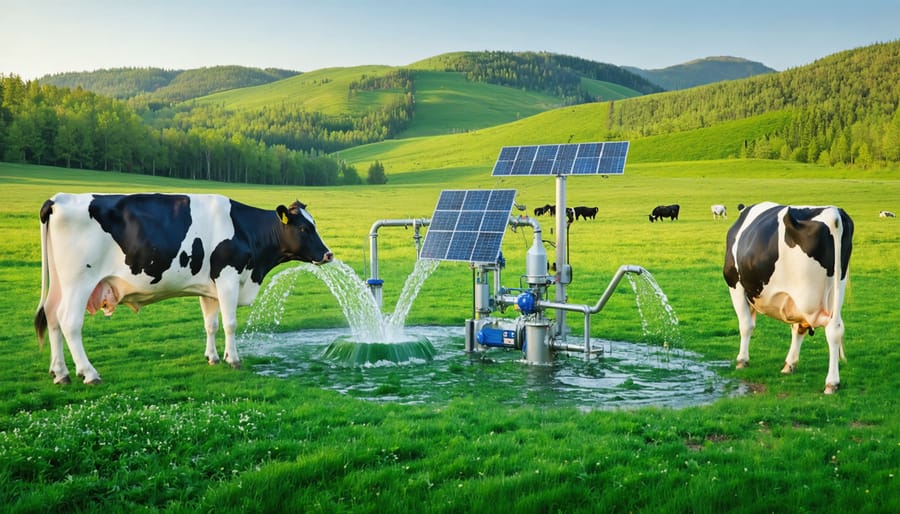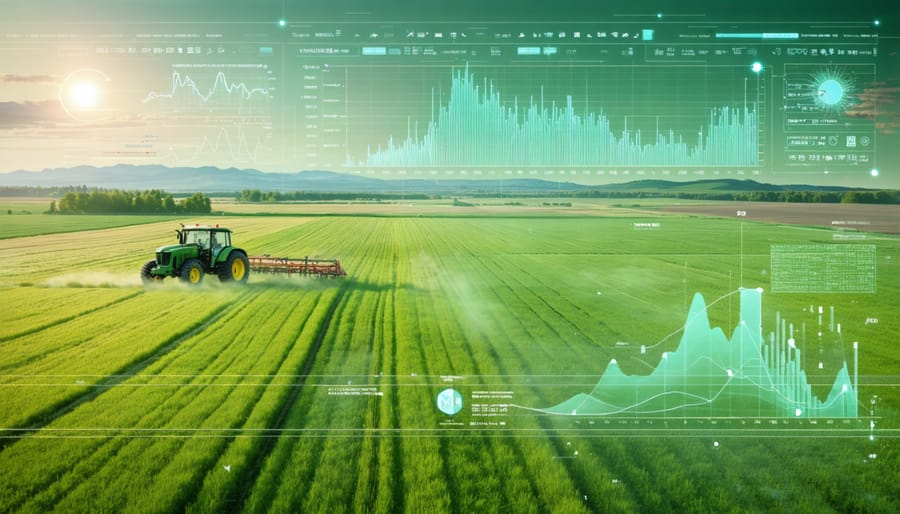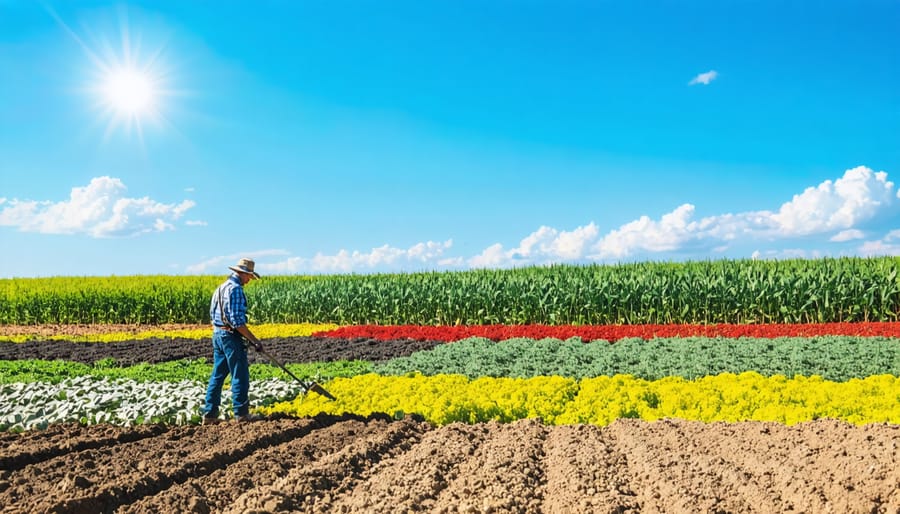Transform your farm’s water efficiency with K-Rain’s revolutionary irrigation technology, engineered specifically for Alberta’s changing climate conditions. This precision-based system delivers up to 40% water savings while maintaining optimal crop hydration through intelligent moisture sensing and automated distribution control. Combining advanced rotary nozzles with smart controllers, K-Rain irrigation systems enable Alberta farmers to maximize yields across diverse soil conditions while significantly reducing operational costs. The system’s proven track record in Canadian agriculture, particularly its resilience during extreme weather patterns, makes it an essential investment for forward-thinking farm operations seeking sustainable water management solutions. With straightforward installation processes and comprehensive local support networks, K-Rain technology represents the next evolution in agricultural irrigation, offering immediate returns through reduced water consumption and enhanced crop performance.
Why K-Rain Systems Work for Alberta Farms
Smart Technology Features
K-Rain’s innovative smart irrigation technology puts precision control right at your fingertips. The system’s Pro EX 2.0 controller allows farmers to manage irrigation schedules through their smartphones, making adjustments based on real-time weather data and soil moisture readings. This automation capability is particularly valuable during Alberta’s varying weather conditions, from spring thaws to summer heat waves.
The system includes rain sensors that automatically suspend irrigation during rainfall, preventing overwatering and conserving resources. Built-in flow monitoring detects leaks and pipe breaks, immediately shutting down affected zones to prevent water waste and potential crop damage. For larger operations, the multi-zone programming feature enables customized watering schedules for different crop types and soil conditions.
What sets K-Rain apart is its user-friendly interface and robust diagnostic tools. The system provides detailed reports on water usage and system performance, helping farmers optimize their irrigation strategies while maintaining compliance with local water regulations. These smart features typically reduce water consumption by 30-40% compared to traditional irrigation methods.
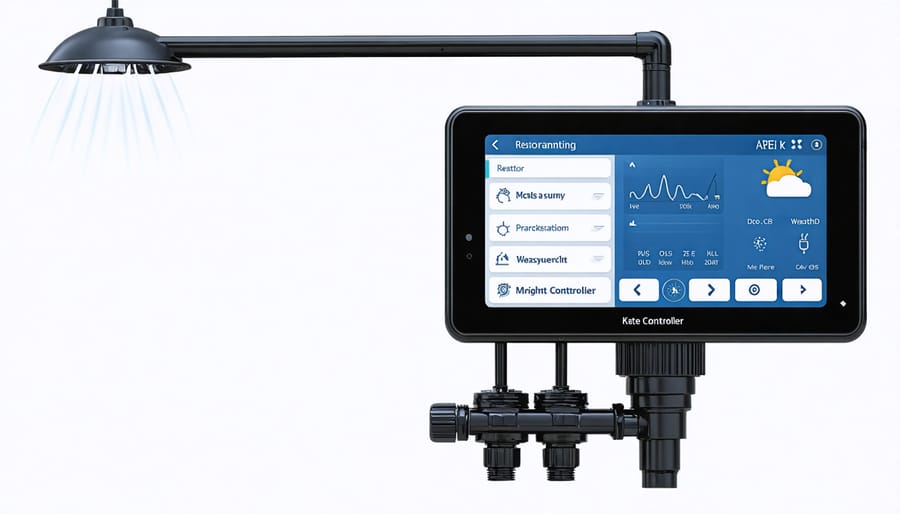
Weather-Responsive Programming
K-Rain irrigation systems excel at adapting to Alberta’s dynamic weather patterns through sophisticated sensor networks and smart controllers. These systems continuously monitor local weather data, including rainfall, temperature, and humidity, adjusting irrigation schedules automatically to optimize water usage.
The technology integrates with local weather stations and uses real-time data to make informed decisions about watering needs. When rain is forecasted, the system automatically delays scheduled irrigation cycles, preventing overwatering and conserving precious resources. This responsive approach is particularly valuable during Alberta’s unpredictable spring and fall seasons.
What sets K-Rain apart is its ability to factor in soil conditions and water infiltration rates. The system’s moisture sensors, typically placed at different soil depths, provide accurate readings that help maintain optimal moisture levels for specific crops. For instance, when clay-heavy soils common in central Alberta become saturated, the system automatically reduces water output to prevent runoff and promote healthy root development.
This smart adaptation not only conserves water but also helps prevent common issues like soil erosion and nutrient leaching, making it an ideal choice for sustainable farming practices in our region.
Installation and Setup for Prairie Conditions
System Components and Layout
A well-designed K-Rain irrigation system consists of several key components working together to deliver efficient water distribution across Alberta farmland. The central controller serves as the system’s brain, allowing farmers to program watering schedules based on specific crop needs and local weather patterns. These controllers can be accessed remotely through smartphone apps, making management more convenient for busy producers.
The distribution network includes a main water source connection, typically drawing from wells or municipal supplies, feeding into primary and secondary mainlines. These connect to lateral lines equipped with pressure-regulated sprinklers or rotors, carefully spaced to ensure uniform coverage. For Alberta’s varying terrain, pressure compensation devices are essential to maintain consistent water delivery across elevation changes.
Valves play a crucial role in system control, with automatic zone valves dividing the farm into manageable irrigation sections. Moisture sensors and rain gauges help optimize water usage by preventing unnecessary irrigation during wet conditions. Filter systems protect sprinkler heads from sediment and debris, particularly important when using pond or dugout water sources common in Alberta.
For optimal performance in our climate, components should be rated for freeze protection, with automatic drain valves installed at system low points. The layout should account for prevailing winds, typically incorporating a 10-15% overlap in sprinkler coverage to ensure even distribution. Most Alberta installations also include quick-coupling valves for spot watering and system maintenance.
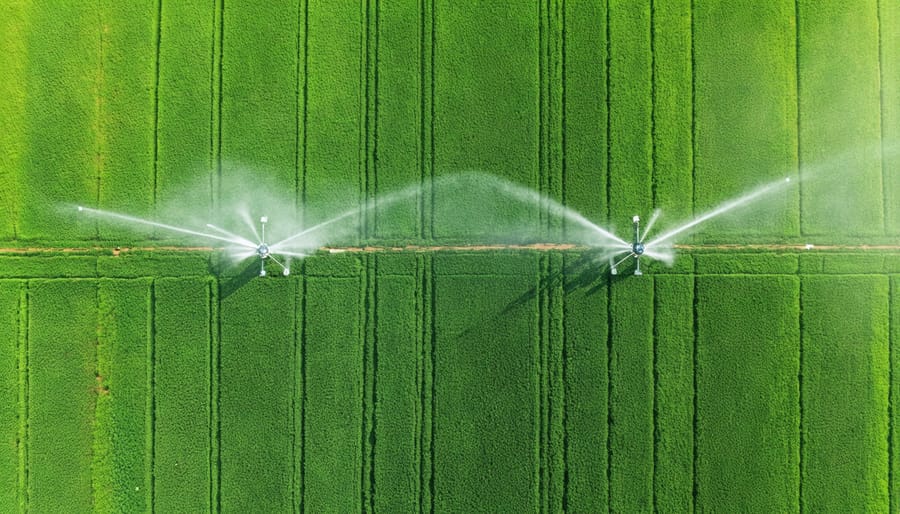
Seasonal Adjustments
In Alberta’s varied climate, adapting your K-Rain irrigation system throughout the growing season is crucial for optimal performance. During spring startup, begin by programming shorter, more frequent watering cycles to support seed germination and young plant establishment. Typical spring settings should run 10-15 minutes per zone, twice daily.
As summer approaches and temperatures rise, adjust your system to water deeply but less frequently, encouraging strong root development. Most Alberta farmers find success with early morning cycles, typically between 4:00 AM and 7:00 AM, when wind interference is minimal and evaporation rates are low. For mature crops, program 20-30 minute cycles every second or third day, depending on rainfall patterns.
Fall programming requires gradual reduction in both frequency and duration. This helps plants prepare for winter dormancy while preventing oversaturation during cooler temperatures. Consider reducing watering to once every 3-4 days, with 15-20 minute cycles.
Remember to adjust these settings based on your specific soil type and crop requirements. Sandy soils typically need more frequent but shorter watering cycles, while clay soils benefit from longer, less frequent irrigation. Local rainfall should also factor into your programming decisions – many successful Alberta farmers use rain sensors to automatically adjust their systems, saving both water and energy costs.
For winter preparation, completely drain your system before the first freeze, typically by mid-October in most Alberta regions.
Real Results: Alberta Farm Case Study
Located just outside of Lethbridge, the Peterson Family Farm has been operating for three generations, managing 800 hectares of mixed crops including canola, wheat, and specialty vegetables. In 2019, facing increasing water management challenges and rising operational costs, farm owner Sarah Peterson made the decision to implement K-Rain irrigation systems across 200 hectares of their vegetable production area.
“We were looking for a solution that could help us maintain consistent crop quality while reducing our water usage,” explains Sarah. “The drought conditions in 2018 really pushed us to explore more efficient irrigation options.”
The results have been remarkable. Within the first growing season, the Peterson Farm documented a 30% reduction in water consumption compared to their previous irrigation system. Crop yields increased by 22% across their bell pepper and carrot fields, while operational costs decreased by approximately $15,000 annually due to reduced energy consumption and labor requirements.
The system’s smart controllers proved particularly valuable during the unpredictable weather patterns of 2020. “The ability to adjust water distribution based on real-time soil moisture data has been a game-changer,” Sarah notes. “We’re no longer overwatering during wet periods or scrambling to compensate during dry spells.”
The installation process, completed in partnership with local agricultural contractors, took three weeks and was scheduled during the off-season to minimize disruption. The Peterson Farm team received comprehensive training on system operation and maintenance, ensuring they could maximize the technology’s benefits.
Most importantly, the investment showed a positive return within two growing seasons. The combination of reduced resource consumption and improved crop quality has positioned the farm for long-term sustainability. “For Alberta farmers considering K-Rain systems,” Sarah advises, “the initial investment may seem significant, but the operational benefits and water conservation aspects make it worthwhile for any mid to large-scale operation.”
Maintenance and Troubleshooting
Regular maintenance of your K-Rain irrigation system is essential for optimal performance in Alberta’s diverse climate conditions. Start by conducting monthly inspections during the growing season, checking for damaged sprinkler heads, blocked nozzles, and leaking pipes. Clean or replace filters every 60-90 days to prevent debris buildup, which is particularly important when using water from dugouts or other surface water sources.
In spring, before the first use, flush the system thoroughly to remove any sediment that may have accumulated during winter. Check valve operations and adjust pressure regulators to ensure even water distribution. During winter shutdown, ensure all water is completely drained from the system to prevent freeze damage, a crucial step for our cold prairie winters.
Common issues include uneven spray patterns, which usually indicate clogged nozzles or incorrect pressure settings. Simply clean the nozzles with compressed air or a fine brush. If zones aren’t activating properly, check the solenoid valves and controller connections. A multimeter can help diagnose electrical issues.
For pressure-related problems, verify that your pump is operating correctly and that pressure regulators are properly adjusted. Low pressure often results from leaks or too many sprinklers operating simultaneously. Reduce the number of active zones or repair leaks as needed.
If you notice dry patches in your field, this might indicate poor overlap in sprinkler coverage. Adjust the arc and radius of your sprinklers, ensuring proper head-to-head coverage. Remember that wind can significantly affect spray patterns, so consider installing wind sensors for automated adjustment during high-wind conditions.
Keep detailed maintenance records and consider scheduling professional inspections at least once per growing season to catch potential issues before they affect crop production.
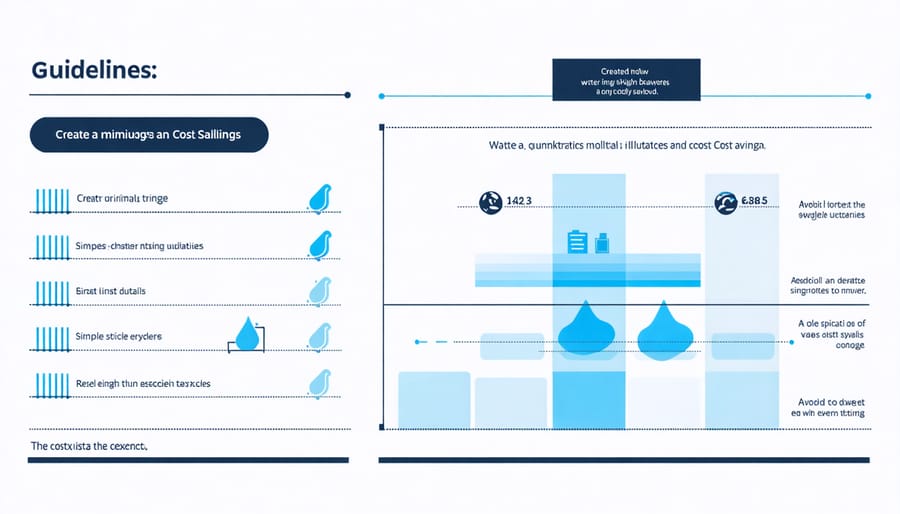
Cost Analysis and ROI
Implementing K-Rain irrigation systems represents a significant initial investment, but the long-term financial benefits make it a worthwhile consideration for Alberta farmers. Our analysis shows that the average installation cost ranges from $3,000 to $7,000 per hectare, depending on field size and system complexity.
The return on investment typically materializes within 2-3 growing seasons through multiple channels. Water consumption reduction of 30-45% translates to annual savings of approximately $800-1,200 per hectare in water costs alone. When combined with precision irrigation practices, farmers report additional savings through reduced energy costs and labour requirements.
Local case studies demonstrate that K-Rain systems can increase crop yields by 15-25% through optimal water distribution and reduced plant stress. For a typical 100-hectare farm in southern Alberta, this could mean an additional $45,000-75,000 in annual revenue, depending on crop type and market conditions.
Maintenance costs average $200-300 per hectare annually, significantly lower than traditional irrigation systems. Government incentives and water conservation grants available to Alberta farmers can offset up to 30% of the initial installation costs, making the technology more accessible to small and medium-sized operations.
K-rain irrigation systems represent a significant step forward for Alberta’s agricultural community, offering a smart solution to our unique climate challenges. Through efficient water management and precise control, these systems have proven their worth across numerous farms in our province, helping producers achieve up to 30% water savings while maintaining or improving crop yields.
The investment in k-rain irrigation technology pays dividends not just in water conservation, but also in reduced labour costs and improved crop quality. For Alberta farmers facing increasing pressure to maintain productivity while protecting our precious water resources, k-rain systems offer a practical path forward.
As our agricultural community continues to evolve, adopting innovative irrigation solutions like k-rain systems isn’t just about staying competitive – it’s about building a sustainable future for Canadian farming. The success stories from local producers demonstrate that these systems are well-suited to our climate and growing conditions.
Consider joining the growing number of Alberta farmers who have made the switch to k-rain irrigation. With available support from local agricultural experts and a strong community of users, there’s never been a better time to enhance your farm’s irrigation efficiency.

